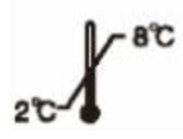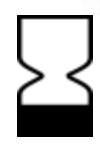Myoglobin (MYO)
The Myoglobin (MYO) Assay Kit (magnetic microparticle chemiluminescence method) (hereinafter referred to as this kit) is used for the in-vitro quantitative detection of Myoglobin (MYO) in human serum.
Keywords:
Myocardium
Category:
Myocardium
Brochure Download:

Tel:
Myoglobin (MYO) Assay Kit
Instructions for Use (Magnetic Microparticle Chemiluminescence Method)
Instruction of Myoglobin(MYO)Detection Kit(Magnetic Solid Phase Chemiluminescent Immunoassay)
【Product Name】
Generic Name: Myoglobin (MYO) Assay Kit (Magnetic Microparticle Chemiluminescence Method)
English Name: Myoglobin (MYO) Detection Kit (Magnetic Solid Phase Chemiluminescent Immunoassay)
【Packaging Specifications】
50 tests/box, 100 tests/box, 200 tests/box.
Calibrator: 6 × 1 bottle (optional), 2 × 1 bottle (optional)
Quality Control: 2 × 1 bottle (optional)
【Intended Use】
The Myoglobin (MYO) Assay Kit (Magnetic Microparticle Chemiluminescence Method) (hereinafter referred to as this kit) is used for the in-vitro quantitative detection of Myoglobin (MYO) in human serum.
Used for the detection of acute myocardial infarction, it also plays an auxiliary role in the detection and prognosis assessment of other diseases. Myoglobin (Myoglobin, MYO) is a heme protein that is abundant in skeletal muscle and myocardial cells. It has the ability to reversibly bind oxygen molecules, and its main function is to store and transport oxygen. The content of MYO in the blood of normal people is extremely low. Only when myocardial or skeletal muscle is damaged, it will escape from the damaged muscle, causing the serum MYO level to increase. The myocardium contains abundant MYO. After the integrity of the myocyte membrane is destroyed, because the molecular weight of MYO (17800) is small, it can quickly enter the blood circulation. MYO appears in the peripheral blood 2-3 hours before the onset of pain and reaches the pathological level 3-6 hours before CK-MB. It reaches the highest level after 6-9 hours, while cardiac enzymes reach the highest level after 12-19 hours. Studies on patients with early myocardial infarction and reinfarction have found that MYO, as a small molecule protein in the cytoplasm, is immediately released from cells into the blood upon the occurrence of myocardial infarction, so it is a sensitive early diagnostic indicator of myocardial infarction. MYO is not a specific marker of myocardial infarction, but it is a strong predictor of mortality in patients with myocardial infarction. In addition, elevated MYO levels have been found in the following syndromes: myocarditis, myopathy, extensive trauma, severe poisoning, severe shock, end-stage renal failure, and acute infectious diseases. Distinctive judgments can be made based on these clinical manifestations. Common laboratory diagnostic methods in clinical practice include immunochromatography, latex immunoturbidimetry, and enzyme-linked immunosorbent assay.
【Test Principle】
This kit uses a direct sandwich method: Biotin-labeled MYO antibody, acridinium ester (AE)-labeled MYO antibody, and MYO in the sample, calibrator, or quality control bind to form a "sandwich" complex. Then, streptavidin-coated magnetic microparticles are added. Through the specific binding of streptavidin and biotin, the antigen-antibody complex is connected to the magnetic particles. Under the action of an external magnetic field, the complex formed by the immunoreaction is separated from other unbound substances. After washing the complex, a pre-excitation solution and an excitation solution are added. Acridinium ester forms an unstable excited intermediate under the action of the pre-excitation solution and the excitation solution. When the excited intermediate returns to the ground state, it emits photons, forming a chemiluminescent reaction, which can be detected using a chemiluminescence instrument. Within the detection range, the chemiluminescence intensity is proportional to the MYO content in the sample. The MYO concentration in the sample can be calculated using a four-parameter Logistic equation.
【Main Components】
1. Product Composition
MYO magnetic microparticle reagent: 1 bottle, streptavidin-coated magnetic microparticles;
MYO anti-reagent 1: 1 bottle, biotin-labeled MYO antibody conjugate;
MYO anti-reagent 2: 1 bottle, acridinium ester (AE)-labeled MYO antibody conjugate;
Calibrator (lyophilized powder): 6 bottles or 2 bottles (optional), containing BSA buffer with different amounts of MYO antigen added. The calibrator value is obtained by scanning the calibrator QR code. After dissolving at room temperature, it is detected;
Quality control (lyophilized powder): 1 bottle each of high and low points (optional), containing BSA buffer with different amounts of MYO antigen added. The target range of the quality control is obtained by scanning the quality control QR code. After dissolving at room temperature, it is detected.
Note ①: Reagents from different batches of kits are prohibited from being used interchangeably.
Note ②: Six calibrator points or two calibrator points are optional. If calibrators and quality controls have been provided to the user, the kit does not need to be reconfigured.
2. Companion Reagents
The following companion reagents are not included in this product but are required for detection:
Pre-excitation solution and excitation solution: Excite acridinium ester to catalyze the generation of photons, so that the chemiluminescence intensity can be detected using a chemiluminescence immunoassay instrument.
Washing solution: Diluted for washing the reaction system.
Source: Provided by our company.
Note: To ensure the accuracy of the test results, the manufacturer of the companion reagents must not be changed arbitrarily during the test.
3. Calibrator Traceability
Calibrators are traceable to the company's selected measurement procedures.
【Storage Conditions and Shelf Life】
The reagents are stable for 15 months at 2-8℃, protected from light, and should not be frozen.
After opening, the liquid reagent is stable for 30 days at 2-8℃, protected from light.
【Production Date】
See product label.
【Applicable Instruments】
Cosmome SMART500S, 6500 or Tuochuang Medical TC-300 fully automatic chemiluminescence immunoassay instrument
Sample Requirements
1. This kit is suitable for serum and whole blood samples.
2. After blood collection, serum should be separated immediately for analysis to avoid hemolysis. Testing must be completed within 24 hours at room temperature. Storage at 2-8℃ is stable for 3 days, and at -20℃ for 30 days. Avoid repeated freezing and thawing.
3. Frozen or refrigerated samples should be returned to room temperature and mixed thoroughly before use.
4. Avoid using samples with severe hemolysis or high concentrations of lipemia.
5. The sample volume should be no less than 200μL.
Testing Method
Note: Please read the instructions carefully before use. Working conditions: Room temperature (15~35℃); Relative humidity ≤80%.
1. Pre-test preparation
1.1 Before the test, all reagents should be brought to room temperature, and the instrument should be preheated for at least 30 minutes;
1.2 According to the system operating instructions, perform the loading of reaction tubes (cups), the addition or replacement of matching reagents, waste liquid disposal, waste tube cleaning, and liquid path filling operations.
2. Reagent and sample loading
2.1 Before reagent loading, place the reagents to be used on a mixing device for thorough mixing. Visually inspect the reagent solution components; they should be clear, free of foreign matter, precipitates, and flocculent matter. Magnetic microparticle reagents should be a uniform suspension without obvious aggregation;
2.2 According to the system operating instructions, scan the reagent barcodes to complete the loading of magnetic microparticle reagents and anti-reagents;
2.3 After mixing the calibrators and quality control samples, transfer them to the instrument's dedicated reaction cups and load them into the instrument's sample positions. After scanning, load the centrifuged serum samples directly into the instrument's sample positions.
3. Detection steps
For optimal detection performance, please follow the relevant instructions in this manual and operate according to the operating manual of the fully automated chemiluminescence analyzer.
Note: The detection reaction process and related parameters have been predefined in the instrument operating software.
4. Calibration curve and calibration
The calibration curve is obtained by scanning the main curve card to generate it directly, or by directly detecting six calibrator points to generate a fitted curve. The system also supports a two-point calibration method to obtain a working calibration curve.
Note ①: Due to inter-instrument differences and system differences caused by different operators, operating environments, and matching general reagents, the six-point direct calibration method is recommended to obtain the working calibration curve.
Note ②: Due to reagent activity drift and changes in batches of general reagents, the calibrated working curve needs to be recalibrated after a certain period of use. Recalibration should be performed under the following circumstances:
l After 1 month (28 days) of using the same batch number of reagents;
l When using a new batch number of reagents, the whole box or pre-activation liquid and activation liquid;
l When the quality control values are outside the quality control range;
l After each maintenance of the analyzer.
5. Result output
The analyzer automatically calculates the MYO concentration of each sample using a working curve obtained by two-point calibration from the standard curve. The results are expressed in ng/mL.
6. Quality control
Two levels of quality control samples should be measured daily along with sample testing, treating the quality control samples as patient samples;
Note: It is recommended to use at least two levels of commercial quality control products. If the measured results are within the system's acceptable quality control range or within your specified range (determined by an appropriate internal laboratory quality control program), the test results are satisfactory; otherwise, it indicates that the test results are unreliable and a test report should not be issued.
Reference Range
Normal range of this kit: ≤48.8ng/mL
Note: The measured MYO levels will vary depending on the region, individual, and method used. Therefore, we recommend that each laboratory establish its own normal range. A diagnosis should not be made solely based on the MYO value obtained by this method; the results should be analyzed in conjunction with other clinical data, including the patient's specific condition and treatment status.
Interpretation of Test Results
1. Due to methodological or antibody specificity reasons, testing the same sample using reagents from different manufacturers may yield different results. Therefore, results obtained using different reagents should not be directly compared to avoid erroneous medical interpretations.
2. Test results exceeding the measurement range of the kit are calculated results extrapolated from the calibrator curve. When reporting such results, please pay special attention. If an accurate value is desired, dilute the sample appropriately before testing. The maximum dilution factor is 10 times.
3. Quality control products can serve as a reference for the reliability of the results of the current experiment; their measured values should be within the allowable range specified on the quality control sheet for this batch of products. Test results should be judged comprehensively based on the reference range and other clinical factors and results. When the test result is close to the upper limit of the reference range, consider performing a confirmatory test on the sample.
Limitations of the Test Method
1. Severe hemolysis (hemoglobin ≥500mg/dL), lipemia (triglycerides ≥1500mg/dL), jaundice (bilirubin ≥20mg/dL), and contaminated samples may affect the test results. Avoid using such samples.
2. The test results of this kit are for clinical reference only and cannot be used alone as the basis for confirming or excluding cases. To achieve diagnostic purposes, this test result must be used in conjunction with clinical examinations, medical history, and other examinations.
3. This product can be used for the determination of human serum samples. The reliability of using it to determine MYO concentrations in other body fluids has not been fully confirmed.
Product Performance Indicators
1. Reagent performance indicators
1.1 Accuracy: Recovery rate P is between 90%-110%.
1.2 Precision: Intra-batch precision ≤8%, inter-batch precision ≤10%.
1.3 Blank limit: Should not exceed 5ng/mL.
1.4 Linearity: Linear range (5~1000) ng/mL, correlation coefficient r≥0.9900.
1.5 Specificity: The result of detecting hemoglobin at a concentration of 10mg/mL should not exceed 5.0ng/mL.
2. Calibration Product Performance Indicators
2.1 Accuracy: Recovery rate P is between 90%-110%.
2.2 Uniformity: Inter-bottle difference (CV) ≤8%.
3. Quality Control Product Performance Indicators
3.1 Expected results: The test value should be within ±15% of the target value of the quality control product.
3.2 Uniformity: Inter-bottle difference (CV) ≤8%.
【Precautions】
1. This reagent is for in vitro diagnostic use only. Reagents from different batches are prohibited from being used interchangeably. Do not use expired reagents.
2. Some components of this kit contain bovine-derived materials, but these raw materials are not from countries or regions with bovine spongiform encephalopathy (BSE) outbreaks, and their production is not carried out in countries or regions with BSE outbreaks. If it is bovine serum, it will be filtered and sterilized after purchase before being used in kit production. Therefore, the kit does not pose a risk of transmitting BSE; some components of the kit contain porcine-derived materials, but these raw materials are not from countries or regions with foot-and-mouth disease outbreaks, and their production is not carried out in countries or regions with foot-and-mouth disease outbreaks. If it is porcine serum, it will be filtered and sterilized after purchase before being used in kit production. Therefore, the kit does not pose a risk of transmitting foot-and-mouth disease; this reagent does not contain human serum, but should still be considered a potential biohazard.
3. This reagent contains preservatives. Avoid contact with skin. If skin accidentally comes into contact with the reagent, rinse thoroughly with plenty of water.
4. All reagents should be stored at 2~8℃, avoid freezing at -20℃, and equilibrate to room temperature before use.
5. The magnetic microparticle reagent should be thoroughly mixed before use, and strong shaking should be avoided.
【Explanation of Labels】
 Store at 2-8℃
Store at 2-8℃  Avoid direct sunlight
Avoid direct sunlight  Store upright
Store upright
 In vitro diagnostic reagent
In vitro diagnostic reagent  Production date
Production date  Expiration date
Expiration date
 Product batch number
Product batch number  See instructions for details
See instructions for details
【References】
1. McComb JM, McMaster EA, McKenzie G, Adgey AAJ. Myoglobin and creatine kinase in acute myocardial infarction. Br Heart J. 1984, 51:189-194.
2. Isakov A, Shapira I, Burke M, Almog C. Serum myoglobin levels in patients with ischemic myocardial insult. Arch Intern Med. 1988, 148:1762-1765.
3. Li WH, Han JY, Sun CQ, et al. Study on the relationship of cPLA2, CK-MB, and membrane phospholipid content in acute myocardial infarction.Heart Vessels, 2011, 26(1) :64-68.
4. Tierney MB, Roth BJ, Psaty B, et al. Predictors of myocardial infarction in emergency rooms patients. Crit Care Med. 1985, 13:526-531.
【Basic Information】
Registered person/manufacturer: Zhejiang Tuochuang Medical Technology Co., Ltd
Address: No. 1 Building, Thousand Talents Plan Industrial Park, No. 78, Zhancheng Avenue, Zhuji City, Zhejiang Province
Production address: No. 1 Building, Thousand Talents Plan Industrial Park, No. 78, Zhancheng Avenue, Zhuji City, Zhejiang Province
After-sales service unit: Zhejiang Tuochuang Medical Technology Co., Ltd
Production license number:
Contact number: 0575-87178692
Fax:
Post code: 311800
Website: www.zjtcyl.com
【Medical Device Registration Certificate Number/Product Technical Requirements Number】
【Date of Approval and Revision of Instructions for Use】
Approval date:
Revision date:
Previous Page
Next Page
Previous Page
Next Page
Related Downloads
Related Products
Contact Us
Adhering to the user-centric approach, while continuously improving service standards and capabilities, we will remain true to our original aspiration, strive for excellence, and wholeheartedly serve our customers!
Contact Number
Company Address
No. 1, Building 1, No. 78, Zhancheng Avenue, Taozhu Street, Zhuji City, Zhejiang Province

Scan to view on mobile phone
Copyright © 2025 Zhejiang Tuochuang Medical Technology Co., Ltd Powered by 300.cn
